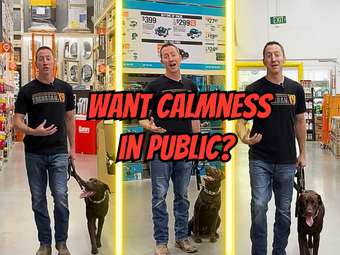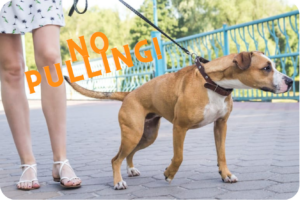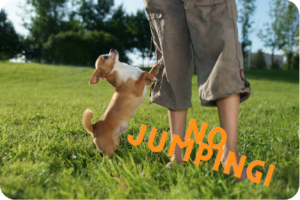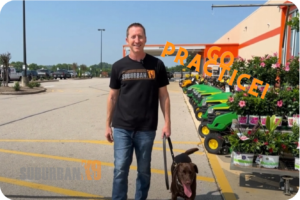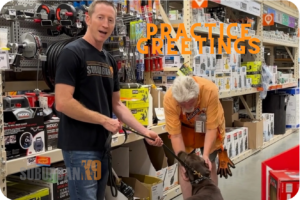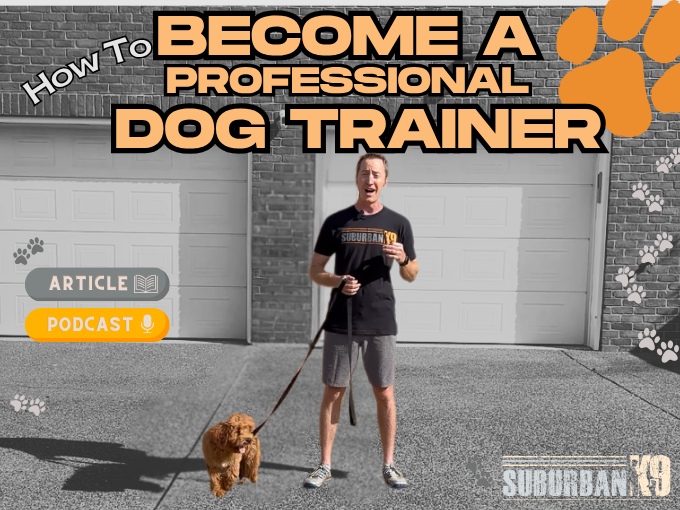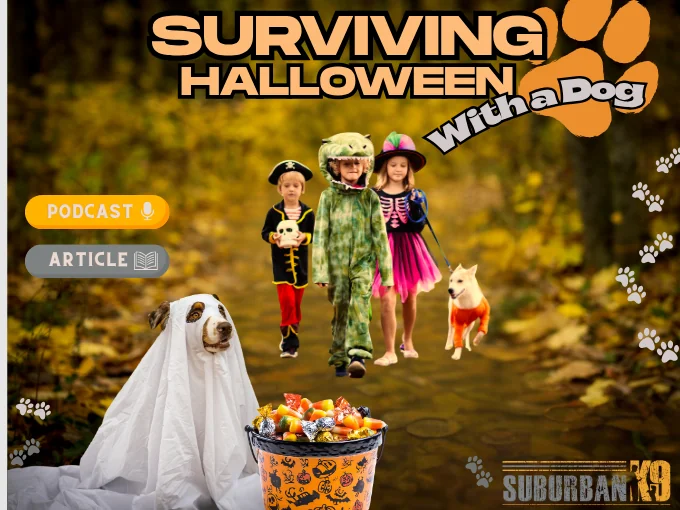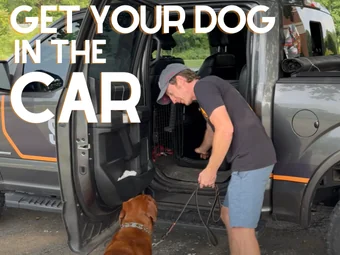Would you like your dog to be perfect on leash in public? Learn how to stop jumping and pulling! It is crucial to have a plan on how to train and socialize your dog in public!
We recommend teaching them the heel command before spending time working in public. This is important because it gives you a way to calm your dog down when needed. It is also a good idea to work on the sit, down, and stay so that you have other ways to control your dog when needed.
How do I get my dog to stop pulling on leash in public?
Teaching your dog to stop pulling on the leash in public requires consistency, patience, and balanced training. Here's a step-by-step guide to help you train your dog to be a perfect gentleman or lady when out in public:
Start with Basic Training at Home:
Begin training indoors or in a quiet, distraction-free area before venturing into public spaces. Teach your dog basic commands like "sit," "stay," and "heel" in a controlled environment.
Choose the Right Equipment to stop jumping and pulling:
Get the right tools for the job. A six or eight foot leash with no stretch and brass fittings will be the safest leash and give you the most control. Do not use retractable leashes! They're nice to give dogs some freedom while on leash, but they are awful to use when heeling.
Is there a good harness to stop jumping and pulling ?
While there are harnesses designed to deter dogs from pulling, we generally do not recommend them. They may accomplish the goal of teaching the dog that it can't pull on a leash, but they can be awkward to do much else with them compared to a traditional collar. Overall, harnesses are very safe, but you sacrifice control.
At Suburban K9, we teach the heel command to every dog we train, it's a very versatile tool that we come back to in many situations. When teaching a dog to heal, a normal collar is completely safe. The worry about collars is if dog constantly pull, and that is something we fix right away!
Is there a good collar to stop jumping and pulling?
Unfortunately, the right collar depends on the dog. We like the Herm-Sprenger Stainless Steel Training Collars for many dogs when working to stop jumping and pulling. However, there are dogs out there that do not respond well to it. For these, we like to try martingale collars.
Overall you want something that will tighten and loosen but stops at a point. No choke chains! This is for safety as well as to help communicate with your dog using the leash. This will be essential to your goal to stop jumping and pulling.
Keep in mind that we should be cautious not to scare our little furry friends. While it's important to slowly push them outside their comfort zones while socializing, if an action is too scary, we could create worse issues!
Practice Leash Walking:
In a quiet area, put your dog's leash and collar on and start walking. Use the "heel" command, and when your dog walks alongside you without pulling, reward them with praise in a calm, happy tone.
Address When There's Tension:
If they stray too far away, give a quick light tug. We are trying to catch their attention here and get them back on track. Try to steer away from constant pressure and stick to occasional corrections. Do your best to keep moving and slowly increase the strength if ignored.
How do I get my dog to stop pulling when excited?
Change Directions:
If your dog sees a distraction SQUIRREL, engages a death stare, and starts pulling and jumping, quickly turn around and heel away. Keep walking away until they're calm; then, you can turn around and attempt to continue your walk.
Repeat this as much as necessary! This will teach them that they need to listen to you even when their excited... and prepare them for going out in public!
Gradually Introduce Distractions:
Gradually increase the level of distractions as your dog gets better at walking calmly. Start in quieter environments and then progress to busier streets or parks.
Short and Positive Sessions:
- At first, keep training sessions short and positive to prevent you and your dog from getting frustrated.
- Aim for multiple short sessions throughout the day.
- Once things are going better, increase the time of your training sessions.
We want to ensure that your pup still has to listen even if they're tired and don't feel like it.
Be Patient:
Training takes time, and every dog is different. Be patient and celebrate even minor improvements. If you do not celebrate little victories, it is easy to get burned out. Take heart with each improvement that you're doing the right thing.
Consistency is Key:
Consistency is crucial for success. Make sure everyone who walks your dog follows the same training techniques to avoid confusing your pup.
When you're ready, get out there:
Head to your local Home Depot or pet store. Start in the parking lot, and if your dog does well, slowly head inside. Keep your dog heeling.
Seek Professional Help if Needed:
If you're struggling to make progress, consider seeking help from a professional dog trainer or behaviorist. We are ready to provide personalized guidance and address any specific challenges you're facing.
How do I get my dog to stop jumping at strangers?
You've done all these steps, and when you get to the store, your dog has their paws all over everyone? While it's easy to be discouraged, all it means is we need more practice. Work on setting up greetings with people that you know.
Take your time, and make sure your pup is calm and healing before you give them permission to approach. If they start jumping, give a tug and heel away to calm them down and try again.
How do I get my dog to stop jumping and biting?
If your dog is showing signs of aggression or is even trying or has bit someone, we're dealing with a serious problem. This likely involves more specialized training than can be given in an article; reach out to us today for a free instant quote so we can start helping as soon as possible.
